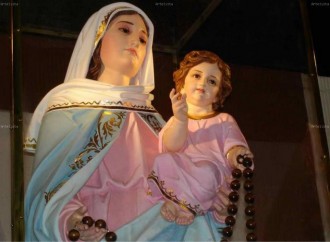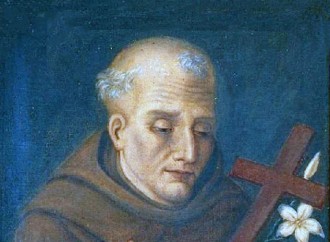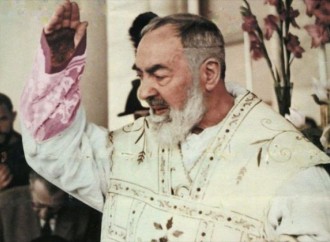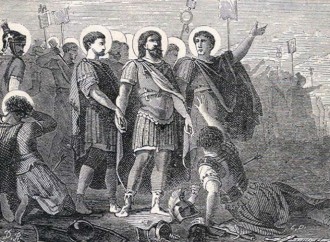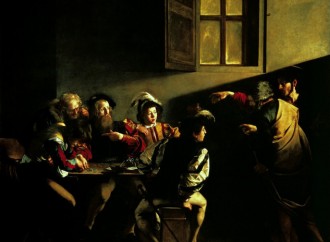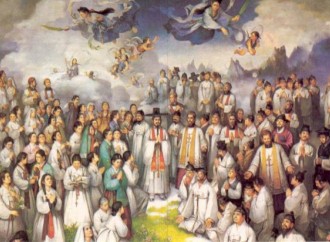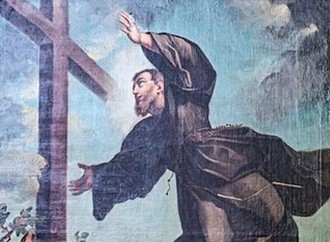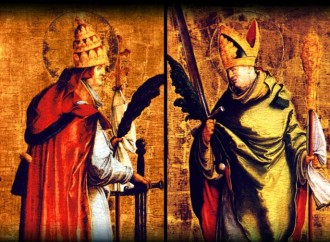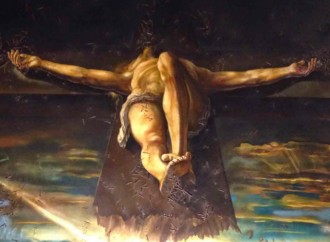Our Lady of the Rosary of San Nicolás
On 25 September 1983, a mother named Gladys Quiroga de Motta, while praying the Rosary in San Nicolás de los Arroyos (Argentina), saw the Virgin Mary holding the Child Jesus. It was the first of a long series of apparitions.
Saint Pacificus
His favourite passage from the Gospel was taken from the Sermon on the Mount: “Blessed are the peacemakers, for they shall be called children of God” (Mt 5:9). Thus, when at the age of 17, Carlo Antonio Divini (1653-1721) joined the Franciscans of the friary of Forano, it was natural for him to choose Pacificus as his religious name.
Saint Pio of Pietrelcina
“The fate of the chosen souls is to suffer”, said Saint Pio of Pietrelcina (1887-1968), born Francesco Forgione, and raised in a devout family that recited the Rosary together every evening...
Saints Maurice and companions
The oldest written source on the martyrdom of St Maurice (†287) and his companions of the Theban Legion, led by him, is the Passio Agaunensium martyrum. This was written in the 5th century by St Eucherius of Lyon.
Saint Matthew
First publican, then apostle and evangelist, and finally saint. Matthew, whom Luke and Mark also call Levi, describes the radical turning point in his life in this way: “And as Jesus passed forth from thence, He saw a man named Matthew, sitting in the customhouse. And He said unto him, ‘Follow Me.’ And he rose and followed Him” (Mt 9:9).
Korean Holy Martyrs
“Since we cannot find any means of changing the minds of Christians, it is imperative that they die in order to destroy the germ of their madness”. This was the edict of King Sunjo in 1802, which ratified the persecutions that had already been taking place since the end of the 18th century. Their blood has not been fruitless. In 1886 religious freedom was granted.
Saint Januarius
Januarius was Bishop of Benevento. Traces of his veneration exist in several ancient sources. His martyrdom took place at the beginning of the 4th century, during Diocletian's persecutions. The invocation that the faithful have been repeating for centuries in Naples relates to the phenomenon of the liquefaction of the blood of the glorious martyr.
Saint Joseph of Cupertino
That the gift of infused science exists can be ascertained by reading about Saint Joseph of Cupertino (1603-1663), who yet called himself Brother Donkey. Even more than for his infused science, he became known for his levitations, which he would have liked to conceal.
Saint Robert Bellarmine
Author of ascetic, pastoral and theological works that earned him the title of Doctor of the Church, Saint Robert Bellarmine (1542-1621) was one of the most erudite men of his time, a strenuous defender of Catholic orthodoxy after the divisions caused by the Protestant Reformation.
Saints Cornelius and Cyprian
The Church commemorates the martyred saints Cornelius (c. 180-253) and Cyprian (210-258) on the same day, as their lives were intertwined during a critical period for Christianity: at the time of the persecutions of Decius, Cyprian and pope Cornelius were in favour of readmitting to communion the lapsi, those who had denied Christ in order to escape persecution
Our Lady of Sorrows
Wonderfully summed up in the Stabat Mater of Blessed Jacopone da Todi, devotion to Our Lady of Sorrows gained particular impetus in Middle Ages, also thanks to the constitution in 1233 of the Order of the Servants of Mary. In 1667 the Servites obtained official approval for the celebration of the “Seven Sorrows of Mary”, a number based on as many episodes narrated in the Gospels.
Exaltation of the Holy Cross
From the East, where it is celebrated with a solemnity equal to Easter, the feast of the Exaltation of the Holy Cross arrived in the West and in particular in Rome, where it is attested before the end of the 7th century.

